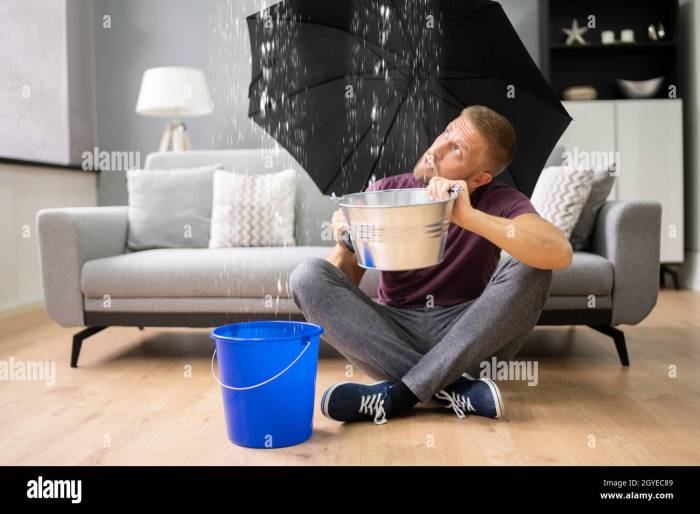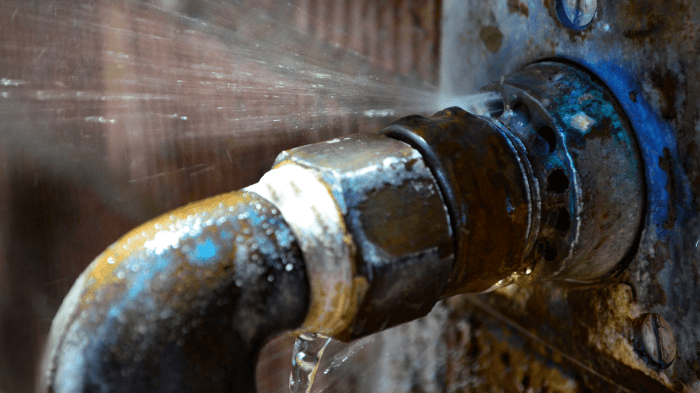Dealing with an Emergency Water Leak in Your House
An emergency water leak in your house can be a nightmare scenario, causing significant damage and stress. From identifying the issue to taking immediate steps and assessing the damage, every moment counts in handling this situation effectively. Let's delve into the key steps and considerations when faced with an unexpected water leak in your home.
Identify the Issue

When it comes to identifying an emergency water leak in a house, there are several signs to look out for. These signs can range from visible water pooling to less obvious indicators like musty odors or damp spots on walls or ceilings.
Locating the Source of the Leak
One of the first steps in addressing a water leak is to locate its source. This can sometimes be challenging, as leaks may originate from hidden pipes or fixtures. To pinpoint the source, start by checking common areas such as under sinks, around toilets, and near water appliances like washing machines or dishwashers.
Listen for the sound of running water or use a moisture meter to detect dampness in walls or floors.
Acting Quickly is Key
It is crucial to act quickly when dealing with a water leak in your home. Even a small leak can quickly escalate and cause significant damage if left unchecked. Water damage can lead to mold growth, structural issues, and costly repairs.
By addressing the issue promptly, you can minimize the extent of the damage and prevent further complications.
Immediate Steps to Take
When dealing with an emergency water leak in your house, it is crucial to act quickly to prevent further damage. Here are the immediate steps you should take:
Shut Off the Main Water Supply
Locate the main water shut-off valve in your home. This is typically found near the water meter or where the main water line enters your house. Turn the valve clockwise to shut off the water supply to your entire house.
Contain the Leak
To minimize damage, place a bucket under the leak to catch dripping water. If the leak is coming from a burst pipe, use towels or rags to soak up excess water and contain the spread of water to other areas of your home.
Contact Professionals for Help
After taking these immediate steps, it is important to contact plumbing professionals for assistance. They have the expertise and tools to properly assess and repair the leak, preventing any further damage to your home.
Damage Assessment
When assessing the extent of water damage in your house, it's crucial to act quickly to prevent further issues from arising. Water damage can lead to structural damage, mold growth, and other costly repairs if not addressed promptly.
Potential Risks of Water Leaks
- Structural Damage: Water can weaken the structure of your home, leading to potential safety hazards.
- Mold Growth: Excess moisture from water leaks can create the perfect environment for mold to thrive, posing health risks to you and your family.
- Electrical Hazards: Water leaks can come into contact with electrical systems, increasing the risk of electrical fires or shocks.
Documenting the Damage
- Take Photos and Videos: Document the water damage by taking photos and videos of the affected areas before starting the cleanup process. This will help support your insurance claim.
- Keep Records: Keep a detailed record of the damage, including receipts for any repairs or replacements needed. This information will be valuable when filing an insurance claim.
- Contact Your Insurance Provider: Notify your insurance provider as soon as possible to report the water damage and begin the claims process.
Repair and Restoration

After identifying the issue, taking immediate steps, and assessing the damage caused by the water leak in your house, the next crucial step is to focus on repair and restoration to prevent further damage and restore the affected areas back to their original condition.
Repairing the Water Leak
Repairing the water leak in your house involves identifying the source of the leak and fixing it promptly. This could include replacing damaged pipes, sealing cracks, or repairing faulty fixtures. It is essential to address the root cause of the leak to prevent future incidents.
Importance of Drying Out Affected Areas
Ensuring that the affected areas are thoroughly dried out is crucial to prevent mold growth, structural damage, and other issues. Use fans, dehumidifiers, and open windows to promote air circulation and speed up the drying process. Additionally, removing any wet materials or belongings can help prevent further damage.
Restoring the Affected Areas
Once the affected areas are completely dry, focus on restoring them to their original condition. This may involve repainting walls, replacing flooring, repairing ceilings, or any other necessary repairs. It is important to pay attention to detail and ensure that the restoration is done properly to avoid future problems.
Outcome Summary
In conclusion, addressing an emergency water leak in your house requires swift and decisive action to minimize damage and restore your home to its original state. By following the Artikeld steps and seeking professional assistance when needed, you can navigate through this challenging situation with confidence.
Stay proactive and prepared to tackle any unforeseen water leaks that may come your way.
User Queries
How can I locate the source of an emergency water leak in my house?
To locate the source of a water leak, check areas with visible water damage, listen for dripping sounds, and inspect piping and appliances for any signs of leakage.
What should I do to minimize damage from an emergency water leak?
Shut off the main water supply, contain the leak using buckets or towels, and move valuable items to dry areas to prevent further damage.
Is mold growth a potential risk associated with water leaks?
Yes, stagnant water from leaks can promote mold growth, which poses health risks and can cause further damage to your home.
Why is it important to document water damage for insurance purposes?
Documenting water damage helps with insurance claims by providing evidence of the extent of the damage and the need for repairs or restoration.